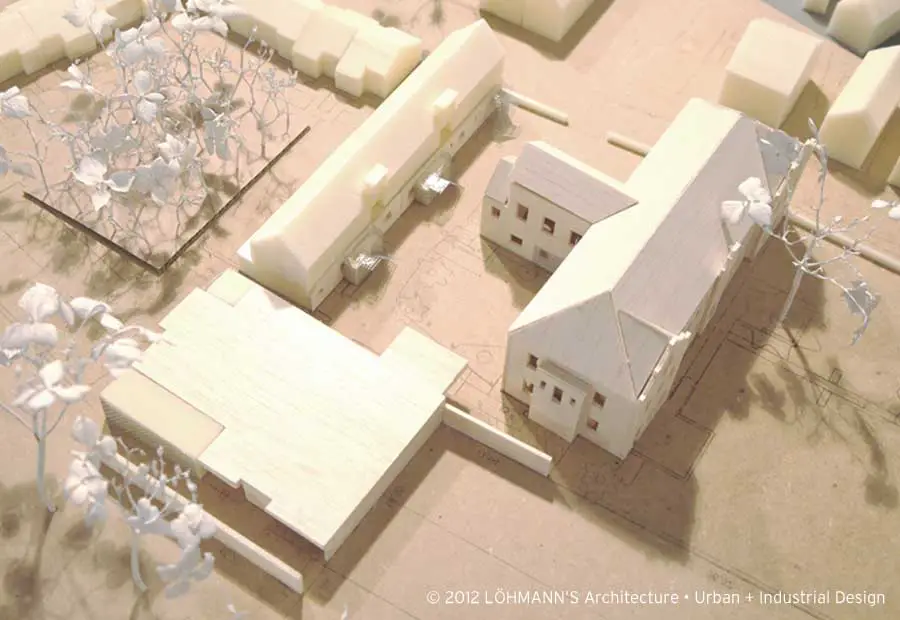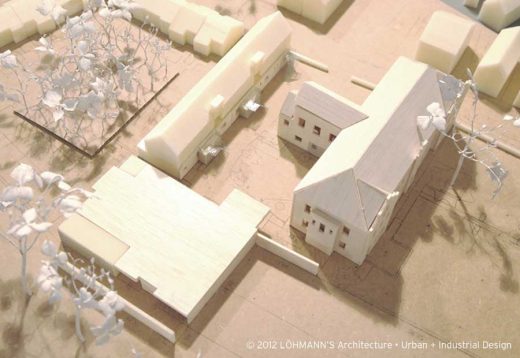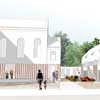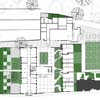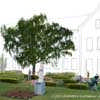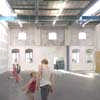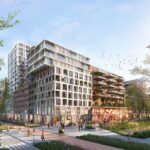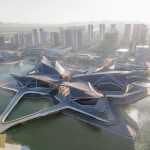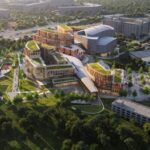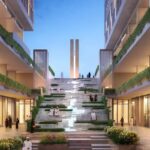LÖHMANN Architecture, Architects Holland, Practice, Building, Dutch Design Studio News
LÖHMANN’S Amsterdam : Dutch Architects
Dutch Architecture Practice – Netherlands Design Office
5 Sep 2012
LÖHMANN’S Architecture • Urban + Industrial Design – Latest Project
New Building in Laarne, Belgium
LÖHMANN’S wins competition in Belgium
Design: LÖHMANN’S Architecture • Urban + Industrial Design
A valuable venue for intergenerational meetings and social support is being created on the site of the former St. Macharius monastery in Laarne, to the south of Ghent. New social and cultural functions will be added and the distinctive monastery buildings will be surrounded by expressive landscaping to create a coherent whole with the existing welfare centre and homes for the elderly.
Setting up a children’s day care centre, new social housing and a community hall, as well as moving the welfare contact point to the location, will create a meeting place for a community of mixed generations and cultures. While respecting the needs and wishes of the various users of the site, the development aims to make the best possible use of the positive influences different generations can have on one another. LÖHMANN’S design has taken this into account by encouraging informal encounters and interaction through the creation of spatial diversity and through giving different levels of meaning to the public space.
THE LOCATION
The site of the former Saint Macharius monastery is of particular significance to the community of Laarne. Throughout its history, the monastery has played the role of a place that felt duty-bound to serve the community, especially those needing help and social support. And this role is to be continued.
Over the years, the original campus-type set-up of the monastery has been relatively well maintained, due to the respectful approach taken to the whole. The grand and distinctive main building with its large south-facing garden is a particularly important feature of the Laarne landscape, as are the former stable buildings.
THE MONASTERY, THE FARMHOUSE AND THE WELFARE CENTRE – THREE BUILDINGS WITH THREE DIFFERENT STORIES
The three buildings to house the new functions are situated close together and are each distinguished by their age and architectural language. In order to retain their individual identity while placing them in a common context, LÖHMANN’S opted for a simple but effective architectural theme – a structure of wooden mullions – which gives form to the ‘repairs’ and modifications to the existing buildings.
In the monastery building, this structure is used to create a light and inviting entrance to the Welfare Contact Point. The monastery’s wealth of history is retained or even brought to light again, as in the former chapel on the first floor, which is turned into the community hall.
The traces of use over the years and many of the original materials are retained and integrated into the transformation. The welfare centre, built in the late 1980’s, is extended by the wooden structure. New social housing will be built on the site of the farmhouse, integrating the characteristic long façade of the stable buildings into the new elevation. Placed as volumes in front of the façade, the wooden mullions here form the entrances to the homes, which also gives a certain amount of zoning between the public and private space.
THE OUTDOOR SPACE ENCOURAGES ENCOUNTERS AND GENERATES PEOPLE’S INVOLVEMENT WITH THEIR ENVIRONMENT
Respect for privacy and zoning from the public to the private space are essential to the success of creating opportunities for people to meet one another. In LÖHMANN’S design for the outdoor space, this takes place by defining three distinctive ‘rooms’, the garden, the square and the orchard, and also by carefully designing the transitions between the buildings and the outdoor spaces.
The vegetable and herb garden, the large flowerpots in front of the social housing and the trees in the orchard can be adopted by the residents, children, employers of the welfare institute or visitors to the welfare centre. Besides generating involvement with the space and a sense of responsibility for it, this also stimulates informal contact and exchanges between different generations and cultures.
Quotes from the jury’s report:
“ This proposal accepts what is there in a simple and honest way…. Based on a correct analysis of the location, the architects make a fresh design, which gives good answers to the questions asked. The wooden elements form points of recognition between the different architectural styles and are consequently a beautiful addition….The vision of the outdoor space is clear and well thought-out. The proposal deals coherently with the public and semi-public spaces…. The maximum preservation and reuse of existing structures is positive from the point of view of cultural heritage…”
The size of the whole location is about 7000m2. The completion of the whole project is planned for the end of 2014. The clients are OCMW Laarne, and SBK Dendermonde for the social housing. The competition was organised by the Flemish Government Architect according to the selection procedure of the ‘Open Call’.
The design team consists of LÖHMANN’S Architecture • Urban + Industrial Design, Amsterdam (architecture and main contractor), in collaboration with Holger Gladys, Dirk Vandekerkhove landschapsarchitecten, Ghent ( landscape design), studiebureau Boydens, Bruges (design of building services) and the office NEY+ Partners, Brussels (design of structural engineering). POLO architects, Antwerp, is responsible for advice and logistic support in Belgium.
13 May 2012
LÖHMANN’S Architecture • Urban + Industrial Design – Latest Designs
Dance House, Amsterdam, The Netherlands
Former STORK Factory Redevelopment – Stichting Beheer Danshuis Amsterdam
Design: LÖHMANN’S Architecture • Urban + Industrial Design
Developing a dance house in an old factory building on the IJ is a feasible project
A report by LÖHMANN’S Architecture • Urban + Industrial Design, in collaboration with the Amsterdam Dance House Foundation (SBDA)
For almost 20 years, initiators from the Amsterdam professional dance field have tried to establish a house for the dance sector. A number of different locations and scenarios have been explored, but until now, none have come to fruition. A Dance House should provide the physical infrastructure needed to maintain the leading position of the Amsterdam (and Dutch) contemporary dance scene, and in these days of funding cuts for the arts, also be affordable. At the end of 2010 the possibility of a new ‘state-of-the-art’ building in the east of Amsterdam fell through because of economic uncertainties. A new option of establishing a house in the former STORK factory on the bank of the river IJ offers a realistic and exciting alternative.
More projects by LÖHMANN’S Architecture • Urban + Industrial Design online soon
Location: Amsterdam, Holland, western Europe
Amsterdam Architect Design Practice Information
Architect office based in The Netherlands.
About LÖHMANN’S Architecture • Urban + Industrial Design
LÖHMANN’S Amsterdam was founded in 1997 by the German architect Heike Löhmann. Since then the office has realized a significant amount of high quality projects, often for creative and demanding clients with specific spatial requirements. The projects are distinguished by their spatial proportions, detailing, and for their elaborated choice and combination of materials.
LÖHMANN’S speciality is an integral approach to the interweaving of the various scales in a project.
LÖHMANN’S is particularly interested in projects that offer an opportunity to give an unexpected twist to a seemingly obvious way of conceiving and perceiving space. The ordinary is put in a new perspective with a well-considered and subtle use of architectonic means.
LÖHMANN’S creates Freiräume – spaces made and designed for individual appropriation by individual users. These spaces are developed in a dynamic process between commissioner, architect and experts of all fields, like technicians but also artists, historians, and sociologists. Dynamics and flexibility are what connect the wide array of projects, varying from private houses, offices, public, cultural and industrial buildings, to urban planning and research.
LÖHMANN’S way of designing is accompanied by a continual fascination and curiosity to gain knowledge about our world, the differences in human needs, and the impact of architectonic aspects on individual and collective behaviour. For this reason we make research and analysis a constant and integral aspect of our design process.
The work of LÖHMANN’S is often exhibited and published internationally and has received several prizes. At the moment the major projects of LÖHMANN’S are in the Netherlands, Germany and Belgium.
Heike Löhmann has taught architecture at several universities in Europe for more than 15 years. She is invited regularly to lecture and to join academic or competition juries. In September 2011 Heike Löhmann moderated the International Conference Global Migration of Planning at the University of Leipzig, and since January 2012 has been a member of the interdisciplinary advisory board for the urban and built environment of the municipality of Tilburg.
Website: http://www.loehmann.nl/
Dutch Architecture
Dutch Architect Studios – Architect Listings
Comments / photos for the LÖHMANN’S Architecture • Urban + Industrial Design Netherlands page welcome

